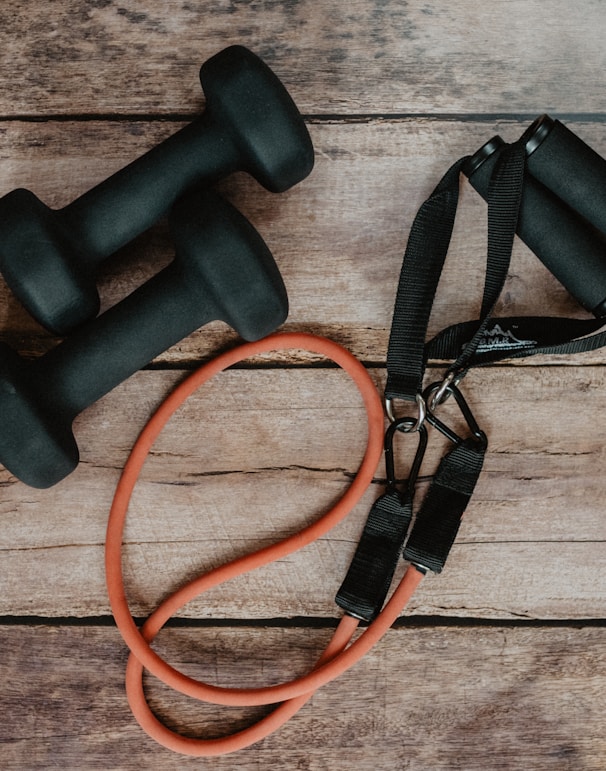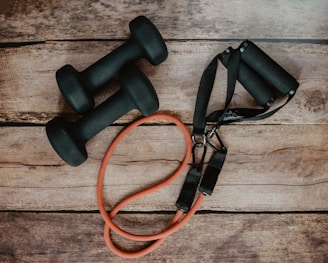The Importance of Suboxone Doctors in My Area: A Guide to Sustainable Opioid Addiction Treatment
Introduction
Opioid addiction has become a critical public health issue in many parts of the world, particularly in the United States. The opioid crisis has led to a surge in overdose deaths, putting immense pressure on healthcare systems and communities. In response, various treatment options have been developed to help those struggling with opioid addiction. One of the most effective treatments is the use of Suboxone, a medication that combines buprenorphine and naloxone to reduce withdrawal symptoms and cravings.
Finding qualified Suboxone doctors in your area can be a pivotal step in the journey towards recovery. These professionals are equipped with the knowledge and expertise to provide personalized treatment plans that cater to individual needs. This article will delve into the importance of Suboxone treatment, the role of Suboxone doctors, and how to find the right Suboxone doctor in your area.
Understanding Suboxone and Its Role in Opioid Addiction Treatment
Suboxone is a prescription medication approved by the FDA for the treatment of opioid dependence. It works by binding to the same receptors in the brain as opioids but produces a much weaker response. This helps to alleviate withdrawal symptoms and reduce cravings, making it easier for individuals to stop using opioids.
Components of Suboxone
Buprenorphine: A partial opioid agonist that binds to opioid receptors in the brain, but activates them less intensely than full agonists like heroin or prescription painkillers. This helps to diminish withdrawal symptoms and cravings without producing a significant "high."
Naloxone: An opioid antagonist that blocks the effects of opioids. When Suboxone is taken as prescribed, naloxone has minimal impact. However, if someone attempts to misuse Suboxone by injecting it, naloxone will precipitate withdrawal symptoms, thus deterring misuse.
Benefits of Suboxone Treatment
Reduces Withdrawal Symptoms: Suboxone helps to manage the painful and uncomfortable symptoms of opioid withdrawal, which can often drive individuals back to opioid use.
Decreases Cravings: By binding to opioid receptors in the brain, Suboxone reduces cravings for opioids, helping individuals maintain sobriety.
Lower Risk of Misuse: The combination of buprenorphine and naloxone makes Suboxone less likely to be misused compared to other opioid medications.
Improves Treatment Retention: Individuals on Suboxone treatment are more likely to stay engaged in their treatment program and achieve long-term recovery.
The Role of Suboxone Doctors
Suboxone doctors are medical professionals who have undergone specialized training and certification to prescribe Suboxone for opioid addiction treatment. These doctors play a crucial role in guiding patients through the recovery process.
Responsibilities of Suboxone Doctors
Assessment and Diagnosis: Suboxone doctors perform thorough assessments to determine the extent of opioid dependence and any co-occurring disorders. This includes physical examinations, psychological evaluations, and reviewing the patient's medical history.
Developing Treatment Plans: Based on the assessment, Suboxone doctors create individualized treatment plans that address the specific needs of each patient. This often includes a combination of medication-assisted treatment (MAT), counseling, and support services.
Monitoring and Adjusting Treatment: Throughout the treatment process, Suboxone doctors closely monitor patients' progress, making adjustments to the medication dosage and treatment plan as needed to ensure optimal outcomes.
Providing Support and Counseling: Suboxone doctors often work in conjunction with counselors, therapists, and support groups to provide comprehensive care that addresses both the physical and psychological aspects of addiction.
Ensuring Compliance: By conducting regular follow-up appointments and drug screenings, Suboxone doctors help ensure that patients adhere to their treatment plans and stay on the path to recovery.
Finding Suboxone Doctors in My Area
Finding the right Suboxone doctor is a crucial step in the journey to recovery. Here are some strategies to help you locate qualified Suboxone doctors in your area:
1. Online Directories and Databases
Several online directories and databases list certified Suboxone doctors. These resources allow you to search for doctors based on location, specialization, and patient reviews. Some of the most reliable directories include:
SAMHSA's Buprenorphine Treatment Physician Locator: The Substance Abuse and Mental Health Services Administration (SAMHSA) provides a comprehensive directory of Suboxone doctors across the United States. You can search by city, state, or zip code to find certified providers in your area.
American Society of Addiction Medicine (ASAM) Directory: ASAM's directory includes addiction medicine specialists, including Suboxone doctors. This resource allows you to search for providers based on location and certification status.
NAABT's Physician/Program Search Tool: The National Alliance of Advocates for Buprenorphine Treatment (NAABT) offers a searchable database of Suboxone doctors and treatment programs.
2. Referrals from Healthcare Providers
Primary care physicians, mental health professionals, and other healthcare providers can often provide referrals to qualified Suboxone doctors. These professionals may have established networks with addiction specialists and can recommend trusted providers based on their knowledge of your medical history and treatment needs.
3. Local Addiction Treatment Centers
Many addiction treatment centers offer comprehensive services, including Suboxone treatment. Contacting local treatment centers can provide valuable information about available resources and help you connect with Suboxone doctors in your area.
4. Insurance Provider Networks
Checking with your health insurance provider can help you find Suboxone doctors who are covered under your plan. Most insurance companies have online directories or customer service representatives who can assist you in locating in-network providers.
5. Community Health Clinics
Community health clinics often provide addiction treatment services, including Suboxone treatment. These clinics may offer sliding scale fees based on income, making them an accessible option for those without insurance or with limited financial resources.
6. Support Groups and Online Forums
Connecting with others who have gone through similar experiences can be a valuable resource for finding Suboxone doctors. Support groups, both in-person and online, can provide recommendations based on personal experiences and help you navigate the process of finding a qualified provider.
Criteria for Choosing the Right Suboxone Doctor
Once you have identified potential Suboxone doctors in your area, it is important to consider several factors to ensure you choose the right provider for your needs:
1. Certification and Experience
Ensure that the doctor is certified to prescribe Suboxone and has experience in treating opioid addiction. Look for credentials such as board certification in addiction medicine or psychiatry, and check for any additional training or certifications related to addiction treatment.
2. Comprehensive Treatment Approach
A good Suboxone doctor should offer a comprehensive treatment approach that includes medication-assisted treatment (MAT), counseling, and support services. This holistic approach addresses both the physical and psychological aspects of addiction, increasing the likelihood of successful recovery.
3. Patient-Centered Care
Choose a doctor who prioritizes patient-centered care, taking the time to listen to your concerns, answer your questions, and involve you in the decision-making process. A supportive and empathetic provider can make a significant difference in your treatment experience.
4. Accessibility and Availability
Consider the doctor's location, office hours, and availability for appointments. It is important to choose a provider who is easily accessible and can accommodate your schedule to ensure consistent and timely care.
5. Reviews and Recommendations
Read patient reviews and seek recommendations from others who have undergone Suboxone treatment. Positive feedback from other patients can provide valuable insights into the doctor's expertise, bedside manner, and overall quality of care.
The Treatment Process: What to Expect
Understanding what to expect during Suboxone treatment can help you feel more prepared and confident as you embark on your recovery journey. Here is an overview of the typical treatment process:
Initial Assessment
The treatment process begins with an initial assessment, during which the Suboxone doctor will evaluate your medical history, substance use history, and any co-occurring mental health conditions. This assessment may include physical examinations, lab tests, and psychological evaluations.
Induction Phase
During the induction phase, the doctor will start you on a low dose of Suboxone and gradually increase the dosage to determine the optimal level that effectively manages withdrawal symptoms and cravings. This phase typically takes place in a controlled setting, such as the doctor's office or a treatment center, to ensure safety and monitor for any adverse reactions.
Stabilization Phase
Once the appropriate dosage is established, you will enter the stabilization phase. During this phase, the doctor will continue to monitor your progress, making any necessary adjustments to the medication dosage. Regular follow-up appointments and drug screenings are conducted to ensure adherence to the treatment plan.
Maintenance Phase
The maintenance phase involves long-term use of Suboxone to support sustained recovery. The doctor will work with you to develop a comprehensive treatment plan that includes counseling, behavioral therapies, and support services. The goal of this phase is to help you achieve and maintain sobriety while addressing any underlying issues contributing to addiction.
Tapering and Discontinuation
For some individuals, long-term use of Suboxone may be necessary to maintain recovery. However, others may eventually transition to a tapering phase, during which the doctor will gradually reduce the dosage of Suboxone. This process should be done under medical supervision to minimize the risk of withdrawal symptoms and ensure a smooth transition to complete discontinuation.
Overcoming Common Challenges in Suboxone Treatment
While Suboxone treatment can be highly effective, it is not without challenges. Understanding and addressing these challenges can help you stay committed to your recovery:
Stigma and Misconceptions
There is often stigma associated with medication-assisted treatment (MAT), including the use of Suboxone. Some people may mistakenly believe that using medication to treat addiction is simply substituting one addiction for another. It is important to educate yourself and others about the science behind MAT and its effectiveness in supporting long-term recovery.
Adherence to Treatment Plan
Staying consistent with your treatment plan, including taking medication as prescribed and attending counseling sessions, is crucial for success. Establishing a routine, setting reminders, and seeking support from loved ones can help you stay on track.
Managing Triggers and Cravings
Even with Suboxone treatment, you may still experience triggers and cravings. Developing coping strategies, such as mindfulness techniques, exercise, and engaging in hobbies, can help you manage these challenges and reduce the risk of relapse.
Addressing Co-Occurring Disorders
Many individuals with opioid addiction also struggle with co-occurring mental health conditions, such as depression, anxiety, or PTSD. Addressing these conditions through integrated treatment can improve overall outcomes and support sustained recovery.
The Future of Suboxone Treatment
Advancements in research and technology continue to shape the future of Suboxone treatment and opioid addiction recovery. Emerging trends and innovations offer new hope for individuals seeking effective and sustainable treatment options:
Telemedicine and Remote Care
The COVID-19 pandemic has accelerated the adoption of telemedicine, making it easier for patients to access Suboxone treatment remotely. Telemedicine allows for virtual consultations, medication management, and counseling, increasing accessibility for individuals in rural or underserved areas.
Personalized Medicine
Advancements in genetics and personalized medicine hold promise for tailoring Suboxone treatment to individual needs. By understanding genetic variations and how they impact medication response, doctors can develop more precise treatment plans that optimize efficacy and minimize side effects.
Expanded Access and Education
Efforts to expand access to Suboxone treatment and educate healthcare providers about its benefits are ongoing. Legislative changes, increased funding for addiction treatment programs, and public awareness campaigns aim to reduce barriers and improve access to quality care.
Integrated Treatment Models
Integrated treatment models that combine medication-assisted treatment (MAT) with comprehensive behavioral therapies and support services are gaining recognition as the gold standard for opioid addiction treatment. These models address the complex interplay between addiction, mental health, and social factors, providing a holistic approach to recovery.
Conclusion
Finding qualified Suboxone doctors in your area is a crucial step in the journey towards recovery from opioid addiction. Suboxone treatment, when administered by experienced and compassionate professionals, offers a powerful tool to manage withdrawal symptoms, reduce cravings, and support long-term sobriety. By understanding the role of Suboxone doctors, exploring available resources, and considering key factors in choosing a provider, you can take control of your recovery and embark on a path to a healthier, more fulfilling life.
If you or a loved one is struggling with opioid addiction, do not hesitate to seek help. Reach out to Suboxone doctors in your area, explore available treatment options, and take the first step towards reclaiming your life from addiction. Remember, recovery is possible, and with the right support and treatment, a brighter future awaits.


